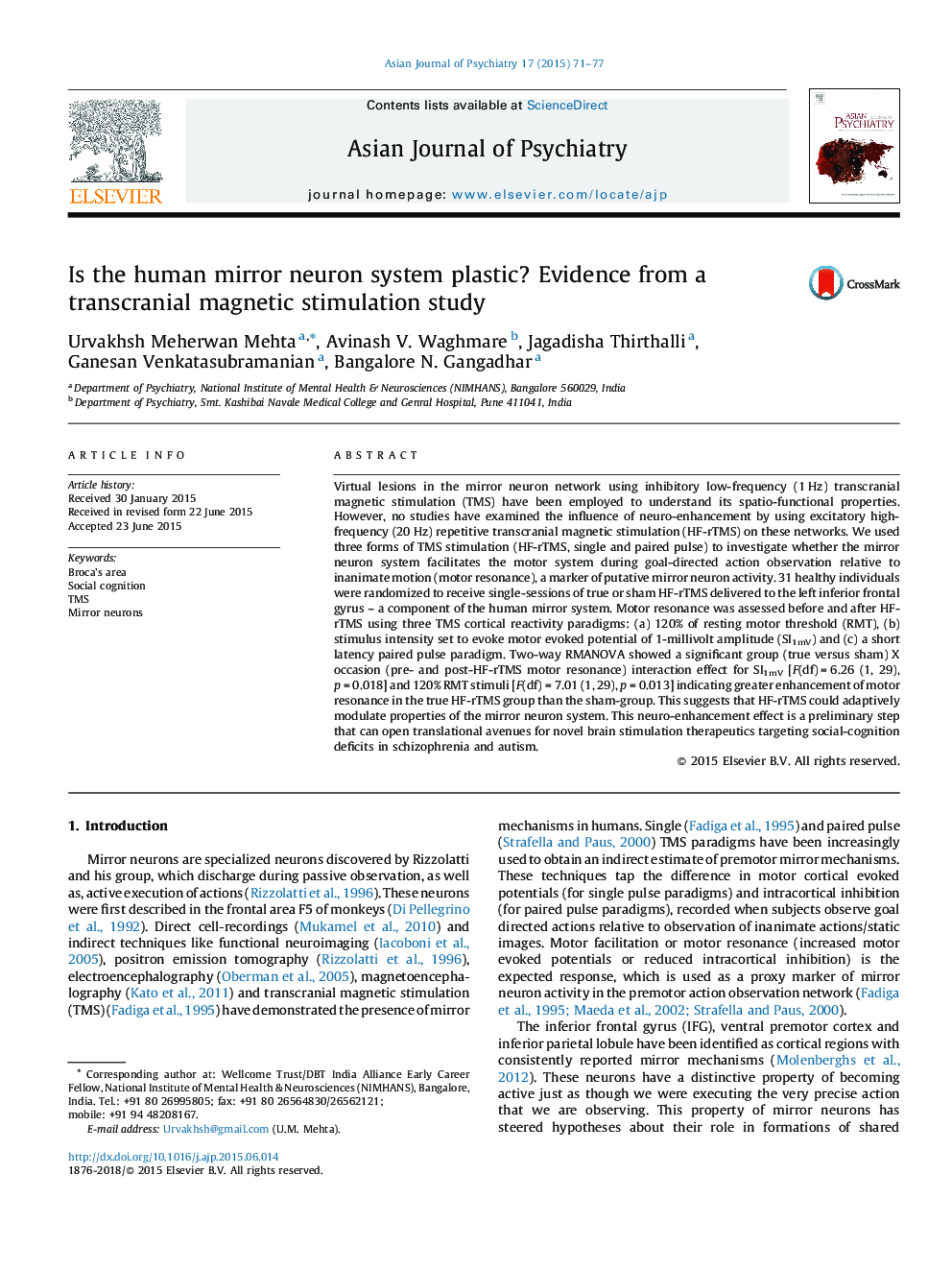| کد مقاله | کد نشریه | سال انتشار | مقاله انگلیسی | نسخه تمام متن |
|---|---|---|---|---|
| 316977 | 1432586 | 2015 | 7 صفحه PDF | دانلود رایگان |
• We examined if 20-Hz repetitive TMS could enhance motor resonance, a putative measure of mirror neuron system activity.
• A randomized controlled pre-post experimental design was employed.
• TMS cortical excitability paradigms were used to measure motor resonance.
• 20-Hz repetitive TMS resulted in a significantly greater enhancement of motor resonance compared to sham-TMS.
• We report for the first time, the enhancement of motor resonance with 20-Hz repetitive TMS.
Virtual lesions in the mirror neuron network using inhibitory low-frequency (1 Hz) transcranial magnetic stimulation (TMS) have been employed to understand its spatio-functional properties. However, no studies have examined the influence of neuro-enhancement by using excitatory high-frequency (20 Hz) repetitive transcranial magnetic stimulation (HF-rTMS) on these networks. We used three forms of TMS stimulation (HF-rTMS, single and paired pulse) to investigate whether the mirror neuron system facilitates the motor system during goal-directed action observation relative to inanimate motion (motor resonance), a marker of putative mirror neuron activity. 31 healthy individuals were randomized to receive single-sessions of true or sham HF-rTMS delivered to the left inferior frontal gyrus – a component of the human mirror system. Motor resonance was assessed before and after HF-rTMS using three TMS cortical reactivity paradigms: (a) 120% of resting motor threshold (RMT), (b) stimulus intensity set to evoke motor evoked potential of 1-millivolt amplitude (SI1mV) and (c) a short latency paired pulse paradigm. Two-way RMANOVA showed a significant group (true versus sham) X occasion (pre- and post-HF-rTMS motor resonance) interaction effect for SI1mV [F(df) = 6.26 (1, 29), p = 0.018] and 120% RMT stimuli [F(df) = 7.01 (1, 29), p = 0.013] indicating greater enhancement of motor resonance in the true HF-rTMS group than the sham-group. This suggests that HF-rTMS could adaptively modulate properties of the mirror neuron system. This neuro-enhancement effect is a preliminary step that can open translational avenues for novel brain stimulation therapeutics targeting social-cognition deficits in schizophrenia and autism.
Journal: Asian Journal of Psychiatry - Volume 17, October 2015, Pages 71–77
